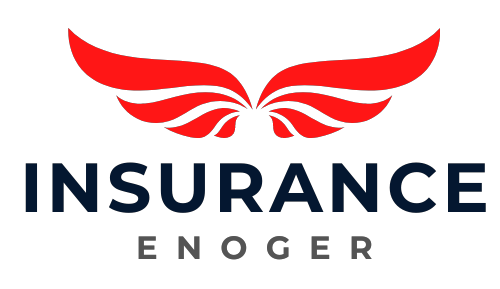Framed photographs are more than just paper and ink; they are windows to cherished memories and often hold significant sentimental and, occasionally, considerable financial value. The distress that comes with the damage of these precious items can be profound. However, there’s a silver lining: insurance policies may cover the costs of restoring these treasured pieces. This blog aims to guide you through understanding the nuances of insurance coverage for restoring damaged framed photographs, offering a beacon of hope in preserving your irreplaceable memories.
Understanding Your Insurance Policy
When it comes to insurance coverage for framed photographs, the devil is in the details. Typical policies that may offer protection include homeowners, renters, and personal articles floater policies. Generally, these policies cover damages due to unforeseen events like fires, floods, or theft. However, the extent of the coverage can vary significantly. It’s crucial to read the fine print of your policy to understand what is and isn’t covered. For instance, some policies may exclude certain types of damage or limit coverage based on the photograph’s age or value. Knowing these details ahead of time can save you from unexpected out-of-pocket expenses.
The Restoration Process
Restoring a damaged photograph involves a series of complex and specialised steps, each crucial for ensuring the photograph’s longevity and aesthetic integrity:
- Detailed Damage Assessment:
- Visual Inspection: Experts closely examine the photograph to assess the type and extent of damage. This might include fading, stains, tears, or water damage.
- Material Analysis: Determining the photograph’s material composition (e.g., paper type, ink, emulsion) is crucial for choosing the appropriate restoration methods.
- Meticulous Cleaning:
- Surface Cleaning: Gentle methods are used to remove surface dirt and dust.
- Deacidification: This is especially important for older photographs to neutralise acids that can cause deterioration.
- Digital Restoration Techniques:
- Scanning: The photograph is digitally scanned at high resolution.
- Image Enhancement: Software is used to correct colour, remove stains, and repair tears or missing parts digitally.
- Physical Repair:
- Tear Mending: Special adhesives and materials are used to mend tears without further damaging the photograph.
- Filling In Losses: In cases of missing pieces, conservators may fill in losses with materials that match the original photograph.
- High-Quality Reprinting (if necessary):
- Archival Quality Materials: Reprints are often made using archival-quality inks and papers to ensure longevity.
- Colour Matching: Care is taken to match the colours and tones of the original photograph as closely as possible.
- Professional Reframing:
- Acid-Free Mats and Backing: These materials are used to prevent future damage.
- UV Protective Glass: This can protect the photograph from light damage, especially if it will be displayed.
Factors Affecting Insurance Coverage
Several nuanced factors can influence your insurance coverage when it comes to photograph restoration:
- Type of Damage:
- Natural Disasters vs. Accidental Damage: Coverage might differ if the damage is due to a natural disaster (flood, earthquake) compared to accidental breakage or mishandling.
- Historical Significance:
- Heritage Value: Photographs with historical or cultural significance may have special considerations in terms of coverage.
- Restoration vs. Replacement:
- Cost-Benefit Analysis: Insurance might cover the cost of restoration only if it is less than or comparable to the cost of replacement.
- Condition Precedent to Coverage:
- Maintenance Requirements: Some policies require proof of proper maintenance and care of the item for coverage to apply.
- Coverage Limits and Deductibles:
- Cap on Restoration Costs: Policies often have a cap on how much they will pay for restoration, which might be less than the actual cost.
Filing a Claim for Restoration
Navigating the insurance claim process for photograph restoration requires attention to detail and persistence:
- Pre-Claim Preparation:
- Review Your Policy: Before damage occurs, it’s wise to review your policy and understand what is covered.
- Preventive Measures: Document the condition of your valuable photographs as a preventive measure.
- Immediate Actions Post-Damage:
- Limit Further Damage: Take steps to prevent further deterioration of the photograph (e.g., moving it away from moisture or sunlight).
- In-Depth Documentation:
- Detailed Inventory: Along with photographs, create a detailed inventory of the damage, including the date of the incident and any relevant circumstances.
- Professional Appraisal:
- Seek Expert Evaluation: If you haven’t had the photograph appraised recently, now might be the time to get an updated valuation.
- Claim Submission:
- Detailed Claim Form: Fill out the claim form provided by your insurer with as much detail as possible.
- Submit Supporting Documents: Along with the claim form, submit your detailed notes, photographs of the damage, and the appraisal.
- Follow-Up and Negotiation:
- Regular Follow-Ups: Keep in regular contact with your insurance adjuster to check on the status of your claim.
- Negotiate if Necessary: If the initial settlement offer does not cover your costs, be prepared to negotiate with the insurance company.
By thoroughly understanding each of these expanded steps, you can approach the restoration of your damaged photograph with greater confidence and enhance the likelihood of a successful insurance claim.
Final Thoughts
Understanding your insurance policy and the value of professional restoration services is paramount in preserving your framed photographs. Regularly reviewing your insurance policy and considering additional coverage for high-value items is wise. Although dealing with damaged photographs can be disheartening, remember that through careful restoration and the right insurance coverage, these cherished memories can continue to adorn your walls and hearts for many years to come.





